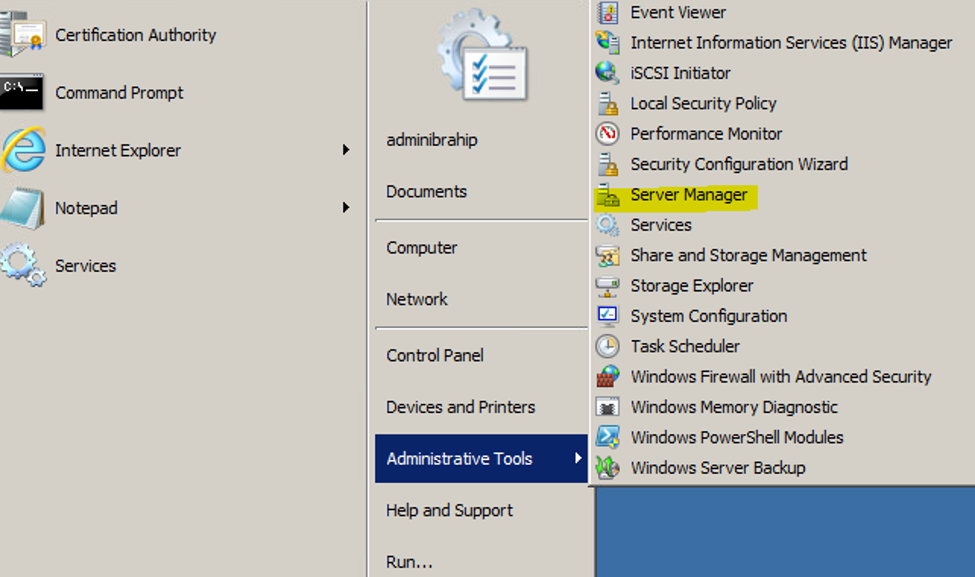
- #WINDOWS SERVER 2008 SECURITY CONFIGURATION WIZARD PASSWORD#
- #WINDOWS SERVER 2008 SECURITY CONFIGURATION WIZARD WINDOWS#
(Basically, remove “Everyone” and “SERVER\Users”) Change the NTFS Security on all non-System partitions to :
#WINDOWS SERVER 2008 SECURITY CONFIGURATION WIZARD WINDOWS#
Right after installing the Windows 2008 OS, you should consider running the following steps : GPOAccelerator can be downloaded from First things first In both scenario’s, a Tool / Windows Shell script called GPOAccelerator can be used to set up a security baseline, either using EC Settings, or SSLF Settings (SSLF is not a supplement on top of EC, it’s just a different set of rules). After all, the SSLF model focusses primarily on security, and this will result in limited functionality) If a setting only needs to be applied to these servers, I’ll mention this (so you don’t break stuff. Some of the settings in this blog post will apply to both environments, others will only apply to the servers with a higher security level requirement. I’ll interpret the latter as servers that don’t need to be part of the domain, or that can have an elevated security level applied. The Windows Server 2008 Security Guide document (content also available on Technet at ) makes a clear distinction between (EC) Enterprise Security (I’ll interpret this as being servers that need to be part of the Enterprise, the Domain, or have roles/features that require integration and/or interaction with AD DS and/or other services within the Enterprise… for whatever reason) and servers that requires specialized security (SSLF). Recommendations on tackling the attack surface that is still present in Windows 2008. Generalīefore going into the various procedures of securing AD and servers, I’ll briefly discuss some of Microsoft’s

It just provides some tips & tricks to increase the overall security level.

Note : this document is not the ultimate complete security guide for 2008. You can find the link at the bottom of this post. – Additional (Custom) settings that should be applied to any server, and general security recommendations to secure ADĭownload section : I have made my customized Security Templates for AD Domains, for AD DC’s, for member servers and for high security hosts available for download. – Using GPOAccelerator and Security Templates to secure “standalone” servers – Using Security Configuration Wizard to secure servers that have a specific role It is better to create your own templates and then apply these templates to the corresponding GPO’s. You don’t want to go in and change all the GPO’s manually. – Use the custom Templates to actually set out the various GPO’s (based on the recommendations that are given in this document). – Create your own extensions and create custom Security Templates – Using GPOAccelerator SCE Extensions to further secure AD and servers using GPO’s – Provide some recommended settings that should be configured to regular server GPO’s – Provide some recommended settings that should be configured to the Domain Controller’s GPO,
#WINDOWS SERVER 2008 SECURITY CONFIGURATION WIZARD PASSWORD#
– Provide some recommended settings that should be configured to a Domain GPO, including Domain Password Policies and Fine Grained Password Policies – Using GPOAccelerator to create GPO’s that can be applied to AD and to regular servers This document consists of the following parts

I’ll use this post to explain some of the recommended hardening techniques, and list some additional tweaks/settings that can (and imho should) be applied to a Windows 2008 server in an attempt to further harden the OS. The document can be downloaded from “Changes in Functionality from Windows Server 2003 with SP1 to Windows Server 2008” Microsoft has published a paper on the differences between 20, which includes some security related information. The attack surface of a default Windows 2008 server may be smaller than it was under NT4, 20, but concluding that Windows Server 2008 is secure, may be one bridge too far. Most of the features/roles available in Windows 2008 are not being installed in a default installation of Windows 2008, leaving the OS in a more or less ‘secure’ state right after installation. Windows 2008 does include many features that will help increase overall security of the OS, or assist you with securing AD, the network, etc. According to Microsoft, Windows Server 2008 is the most secure Windows server version ever.


 0 kommentar(er)
0 kommentar(er)
